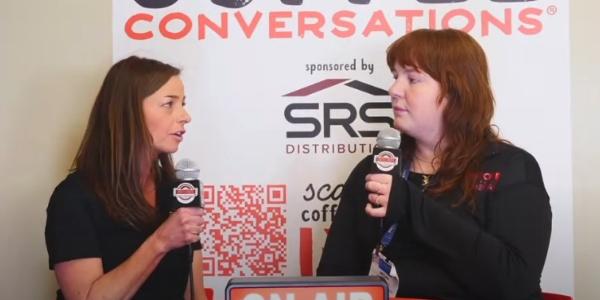Preventing Heat-Related Illness and Injury

By Cotney Attorneys & Consultants.
Every day, construction workers face many risks on the job site.
Among these are heat-related hazards, which can lead to dangerous medical conditions. Studies show that from 2000 to 2009, the United States saw some $5.4 billion in healthcare costs for heat stroke, heat exhaustion, and other heat-related issues. And each year, there is an average of 36 heat-related deaths in the country.
Undoubtedly, you are concerned about keeping your workers safe and keeping your projects on track, so those statistics may be alarming. But rest assured, with some planning and training, you can prevent heat-related injuries and illness on your worksite.
How the body reacts to heat
Your workers can experience heat stress when exposed to heat from environmental factors, physical activity and the clothes they wear. Their bodies try to maintain their core temperature through sweat, but if they are dehydrated, they can experience heat cramps, heat exhaustion and heat stroke. Not only is heat stress harmful in and of itself, but it can also cause falls and other accidents, which result in serious injuries.
- Heat cramps: This condition can be caused by increased sweat. Symptoms include pain, muscle cramps, or spasms in the arms, legs and abdomen.
- Heat exhaustion: This condition is the result of dehydration. Symptoms include extreme weakness, fatigue, rapid heart rate, nausea, dizziness, fast but shallow breathing, and a somewhat elevated body temperature.
- Heat stroke: This condition can be fatal or cause permanent disability. Symptoms include confusion, severe headache, loss of coordination, high body temperature, profuse sweating and seizures.
Using heat acclimatization
Your crew may have adverse reactions when they suddenly encounter higher temperatures. This problem can affect new workers, or it may occur when the seasons change or you experience a heatwave. To prepare your workers for the heat, it is critical that they spend several days getting acclimated to the temperature, slowly increasing exposure each day. While the full process can take two weeks, most workers see partial results as soon as seven days. However, how workers acclimate depend on many factors, including their age, diets, gender, physical condition and type of exposure.
Once acclimated, workers should keep their heat exposure somewhat consistent. If they are absent from the work site for a week or so, they will need to reacclimate. However, that process is quicker and is usually accomplished in two to four days.
Maintaining a healthy work site
There are several strategies you can incorporate to help protect your workers from the heat.
- WBGT: You should be aware of the WetBulb Global Temperature (WBGT) on your site. Unlike the heat index, which considers temperature and humidity in shady areas, the WBGT measures heat stress in direct sunlight, accounting for temperature, wind speed, humidity, cloud cover and sun angle.
- Break time: Based on how high the WBGT is, your workers should be given regular breaks throughout the workday to ensure they do not get too hot. It may feel like such a schedule will inhibit productivity, but your workers will actually be more efficient if they can rest and cool off periodically.
- Scheduling: When possible, schedule the hottest tasks for the cooler part of the day. You can also try breaking up these tasks among nonconsecutive days.
- Hydration: Be sure that workers have access to water or sports drinks on the job site. Hydration is vital for preventing heat-related issues, but how much is necessary will vary from person to person. In most cases, plain water should be sufficient. However, on particularly long, hot days, it is best to replace electrolytes through the use of sports drinks.
- Body temperature: If possible, you should monitor your workers’ core body temperatures while they are on the job. Many smartwatches have this capability, and there are other devices on the market that you can purchase for this use.
- Water source: Keep a large container of cool water, such as a tub, child’s wading pool, or big bucket, so that workers can submerge their arms and hands. This practice will bring down their body temperatures.
- Clothing: Encourage your workers to wear light, breathable, loose-fitting clothing on the job. You can also suggest they wear specialized heat-protective clothing or provide it for them.
In case of emergency
If you realize that a worker is in distress, you must act quickly.
- In the event of heat cramps, advise the affected worker to stop working, sit in a cool place, and not resume activity until a few hours after the cramps have subsided. Encourage the worker to drink clear juice, water, or a sports beverage. Seek immediate medical attention if the worker has a heart condition, follows a low-sodium diet, or experiences cramps for more than one hour.
- For heat exhaustion, advise the worker to stop all activity, loosen clothing and rest in a cool area. Encourage the worker to drink water or a sports beverage. If you have facilities on-site, have the worker take a cool bath or shower. If the condition continues for more than 15 minutes, call 911.
- For heat stroke, call 911 immediately. As you wait for emergency medical help to arrive, move the worker to a cool area. If you have the supplies, quickly give the worker a cold-water or ice-water bath. If that is not possible, apply cooling packs to the worker’s armpits, groin and chest. If you must provide transportation to a medical facility, cool down the worker before trying to transport.
Ongoing prevention
As your crew prepares for hot weather, meet with all your supervisors and ensure that workers can recognize the signs of heat exhaustion and heat stroke. Double check that everyone is acclimated to the weather, and remind your workers about staying hydrated. If you have the resources, have a health professional visit your site and give a presentation on best practices.
When your workers stay healthy, your projects will remain on target, and your business will be in the position to succeed and thrive.
Learn more about Cotney Attorneys and Consultants in their RoofersCoffeeShop® Directory or visit www.cotneycl.com.
Disclaimer: The information contained in this article is for general educational information only. This information does not constitute legal advice, is not intended to constitute legal advice, nor should it be relied upon as legal advice for your specific factual pattern or situation.






















Comments
Leave a Reply
Have an account? Login to leave a comment!
Sign In